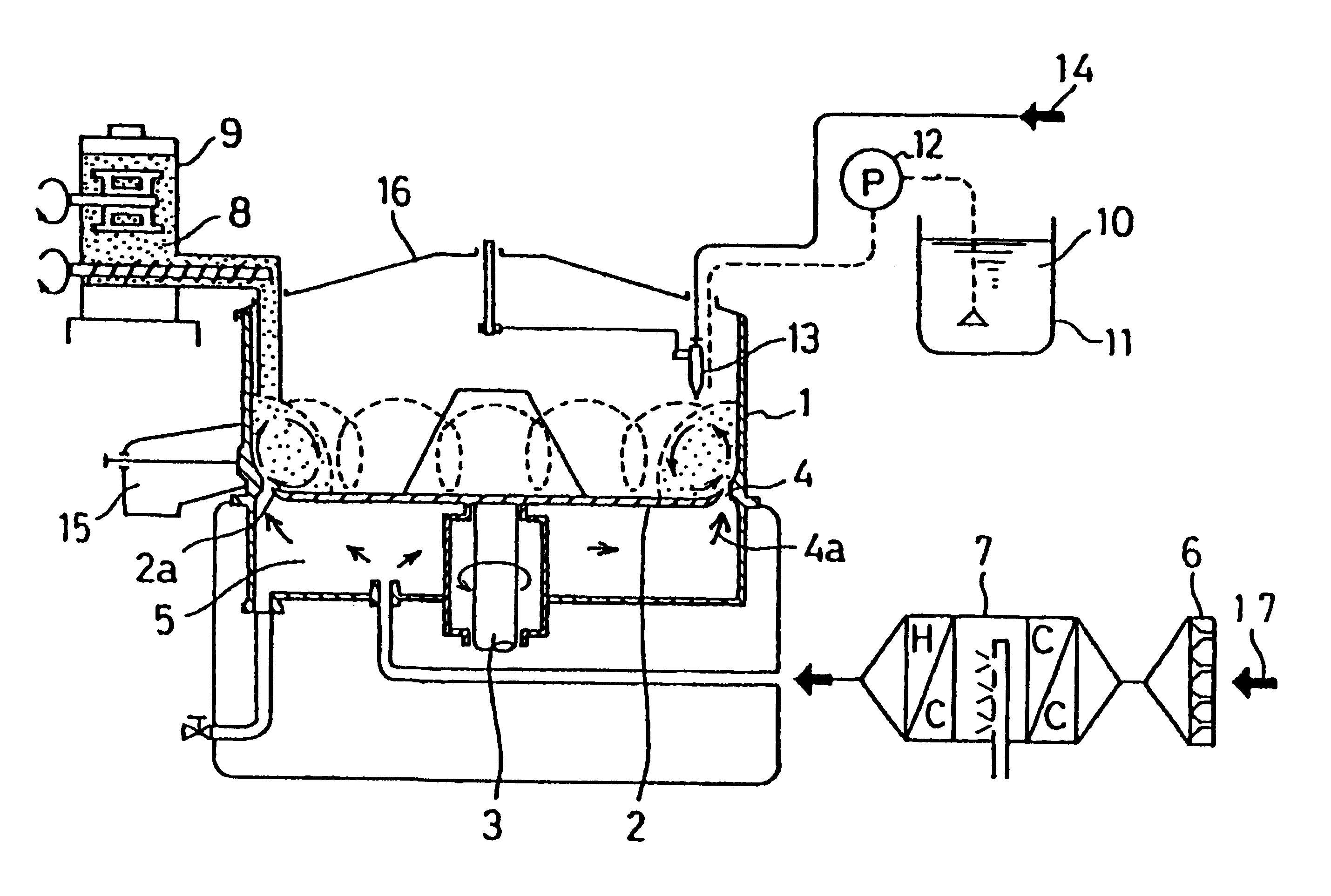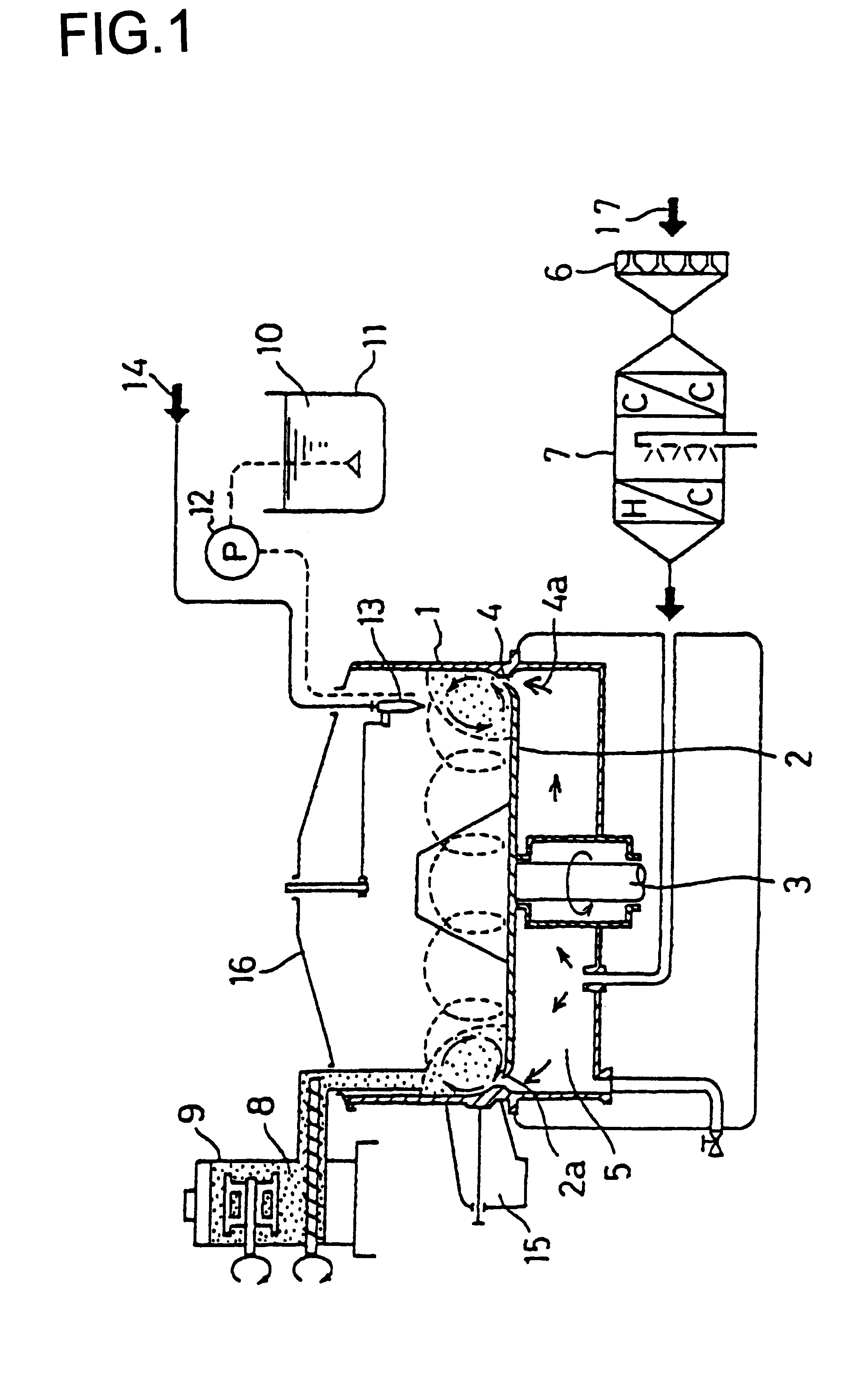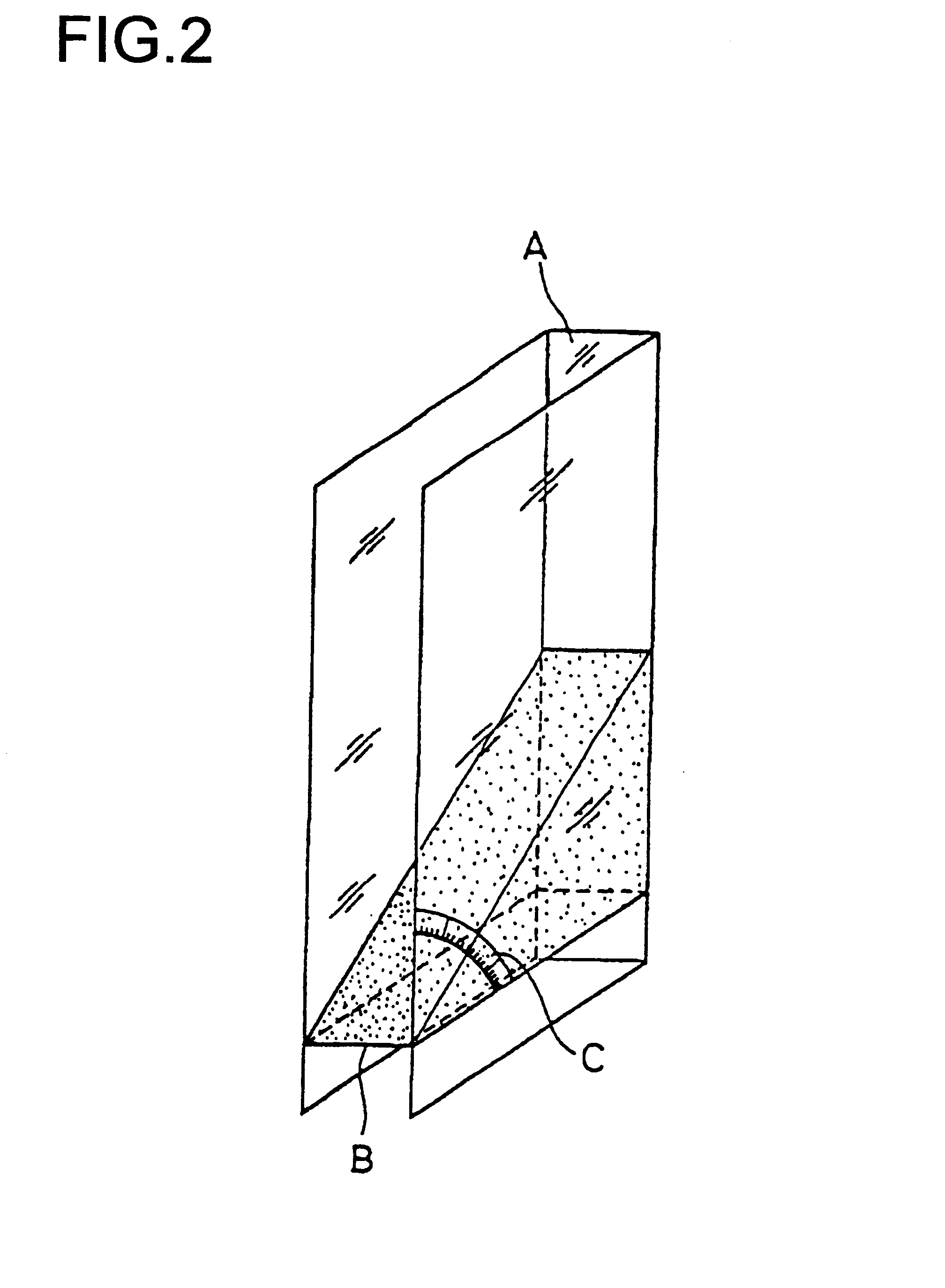Spherical single-substance particles, medicines and foodstuffs containing the particles, and method of production thereof
a single substance, spherical technology, applied in the field of spherical single substance particles, medicines and foodstuffs containing the particles, and the method of production thereof, can solve the problems of brown discoloration, complicated tests, and the inability to produce spherical particles of lactos
- Summary
- Abstract
- Description
- Claims
- Application Information
AI Technical Summary
Problems solved by technology
Method used
Image
Examples
example 2
D-Mannitol powder (2 kg) was charged in a kneader and water (200 g) was added thereto. The mixture was kneaded for 15 min. and then disintegrated with a power mill equipped with a 4 mm screen to give moist powder. The moist powder was charged in CF apparatus, the rotary disc was rotated at 200 rpm, and the powder was then subjected to spray granulation while spraying water (70 mL) at a rate of 5 mL / min. The resultant granules were dried and then sieved to give granules having particle sizes of 212-355 .mu.m, whereby D-mannitol granules for use as cores for preparing spherical particles were obtained.
The same procedures as in Example 1 was performed, except that the D-mannitol granules (212-355 .mu.m) were used as cores in place of the D-mannitol granules (355-500 .mu.m), thereby yielding spherical D-mannitol particles having particle sizes of 300-500 .mu.m (yield: 80.2%).
The spherical particles had an aspect ratio of 1.10, a bulk density of 0.72 g / mL and an angle of repose of 32 deg...
example 3
The D-Mannitol granule cores (212-355 .mu.m) (1 kg) obtained in Example 2 were charged in CF apparatus, and the rotary disc was rotated at 180 rpm while supplying slit air into the granulating vessel. Subsequently, spray granulation was performed for 40 min. by spraying a 1 wt % aqueous solution (240 mL) of hydroxypropyl cellulose ("HPC-L" made by Nippon Soda Co., Ltd.) under pressure at 0.8 kg / cm.sup.2 while dispersing D-mannitol powder having an average particle size of 7.4 .mu.m (1 kg) to the cores at a feed rate of 25 g / min. The resultant granules were dried and then sieved, thereby yielding moist spherical D-mannitol particles.
The moist spherical particles were charged in a granulating vessel of FL apparatus, and then spray coated with a 20wt % aqueous D-mannitol solution (1 kg) at a rate of 40 mL / min while drying at 60.degree. C., thereby yielding spherical D-mannitol particles having particle sizes of 300-500 .mu.m (yield: 78.5%).
The spherical particles had an aspect ratio of...
example 4
Crystalline vitamin C (L-ascorbic acid) (500 g), which was previously been sieved to 180-355 .mu.m, was charged as cores on the rotary disc in CF apparatus and the rotary disc was rotated at 200 rpm, while supplying slit air into the granulating vessel. Subsequently, spray granulation was performed by spraying water on the cores at a rate of 10 mL / min. under pressure at 0.8 kg / cm.sup.2 while dispersing powdery vitamin C (L-ascorbic acid) (1550 g) with an average particle size of 21.4 .mu.m over the cores at a feed rate of 60 g / min., thereby giving moist spherical particles.
The moist spherical particles were charged in FL apparatus, and then dried under fluidized conditions at 60.degree. C. After the drying was completed, vitamin C (L-ascorbic acid) was coated on the dried spherical particles under the same fluidized conditions by spraying a 20wt % aqueous vitamin C solution (800 g) at a rate of 40 mL / min and then drying the resultant particles, thereby yielding spherical particles c...
PUM
| Property | Measurement | Unit |
|---|---|---|
| Fraction | aaaaa | aaaaa |
| Angle | aaaaa | aaaaa |
| Viscosity | aaaaa | aaaaa |
Abstract
Description
Claims
Application Information
 Login to View More
Login to View More - R&D
- Intellectual Property
- Life Sciences
- Materials
- Tech Scout
- Unparalleled Data Quality
- Higher Quality Content
- 60% Fewer Hallucinations
Browse by: Latest US Patents, China's latest patents, Technical Efficacy Thesaurus, Application Domain, Technology Topic, Popular Technical Reports.
© 2025 PatSnap. All rights reserved.Legal|Privacy policy|Modern Slavery Act Transparency Statement|Sitemap|About US| Contact US: help@patsnap.com



